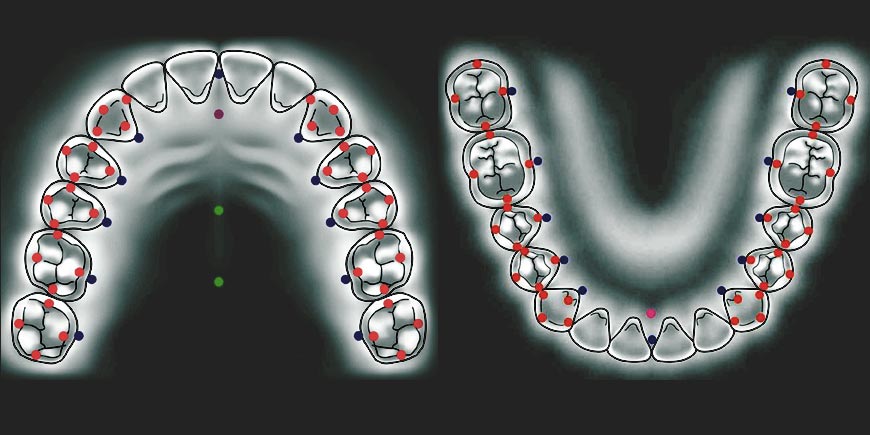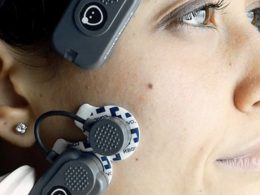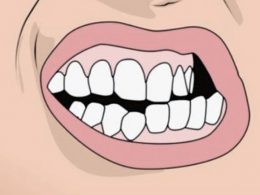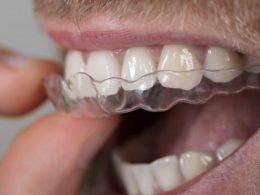Table of Contents
Occlusal adjustment, selective grinding or coronoplasty; is a procedure whereby the occlusal surfaces of the teeth are precisely modified to improve the dental contact pattern when biting.
The tooth enamel is selectively removed until the intervened teeth come into contact, in such a way that the treatment objectives are met. Since this procedure is irreversible and involves the removal of healthy tooth structure, its usefulness is limited. Therefore, there must be very precise indications that justify its execution.
It is generally used to treat occlusal disharmonies or interferences, temporomandibular disorders, parafunctional habits like bruxism and during the final detailed in orthodontic and oral rehabilitation treatments; to achieve an occlusion or bite that is as stable, physiological and balanced as possible.
Temporomandibular Disorders
Selective grinding is indicated when there is sufficient evidence that permanent alteration of an occlusal condition will reduce or eliminate the symptoms associated with a specific temporomandibular joint (TMJ) disorder. This evidence should not be determined by the severity of the malocclusion, but by its etiology.
In general, the severity of the malocclusion does not correlate very well with its clinical signs and symptoms, mainly due to the great variability in the physiological tolerance of patients.
Evidence of the need to permanently change a person’s occlusal condition is obtained through reversible occlusal therapy, generally practiced through the use of splints and other occlusal devices.
Selective grinding is indicated when the occlusal appliance has eliminated the symptoms of dysfunction after a reasonable time of use, and has achieved to relax the masticatory muscles in order to perform a reliable occlusal or bite analysis, in a position of centric relation or very close to it.
Centric relation is defined as the maximum anterior and medial condyles position inside the glenoid cavities of the temporal bone, with the menisci suitably interposed between both bone surfaces. Do not panic!, we are talking about the temporomandibular joint (TMJ).
Although this complex concept (it is even for many Dentists) will be of little use to you, the important thing is to know that selective grinding cannot be done right off the bat, no matter how sore, uncomfortable or desperate the patient may be due to his pathology. First, a first phase of treatment must be exhausted to relax the muscles and be able to determine which teeth and surfaces generate interferences and/or premature contacts. If it is not done that way, it is impossible to know if it is necessary to wear out, and even less, where exactly.
Occlusal Analysis
Through the occlusal analysis, the relationship between the occlusal surfaces of the teeth of both arches can be determined, between which there must be balance and the presence of sufficient cusp-fossa or cusp-marginal ridge contacts. For this reason, it is necessary to have methods or tools that allow a precise analysis of the occlusion and the objective detection of occlusal alterations (premature contacts and interferences).
Different devices are used to perform the occlusal analysis in clinical practice, with semi-adjustable articulators and dynamic occlusal indicators being the most widely used.
To use a semi-adjustable articulator, it is necessary to take impressions of the dental arches, obtain plaster casts, and properly relate them using the apparatus to mechanically simulate the patient’s bite. Then, with the use of articulating paper, the contacts in centric relation and maximum intercuspation are recorded sequentially.
The T-Scan occlusal analysis system, consists of a digital technology that allows digitizing the location and time of intercuspid contacts. It measures the relative occlusal force and the time it takes to complete a full closing arch. It also allows the sequential assessment of contacts both in maximum intercuspation and in excursive movements (laterality and protrusive).
Scopes and Limitations of the Treatment
Even when alteration of the occlusal condition is indicated, a selective grinding procedure may not be the treatment of choice. Selective grinding is appropriate only when the therapeutic objectives can be met with minimal dental wear, limited to the structure of the enamel or surface layer of teeth.
This is usually possible in the case of patients with relatively good dental alignment and sliding in centric (discrepancy between centric relationship and position of maximum intercuspation) equal to or less than 2 mm, with minimal horizontal component. In these circumstances, it is relatively easy to predict the outcome of treatment.
Similarly, it is very easy to intuit that a patient with a horizontal sliding of 6 or more mm and very misaligned teeth, is not a good candidate for a selective grinding procedure.
When dental malposition is severe, selective grinding must be accompanied by other restorative procedures, since dentin exposure poses serious problems (increased sensitivity, susceptibility to decay and wear) that under no circumstances can be neglected.
Therefore, it is extremely important that both the professional and the patient know and are prepared in advance for the implications of the procedure, which could include some root canal treatments and the fabrication of onlays or full-coverage crowns.
Objectives of Selective Grinding
Its general objective is to achieve, through the modification of the existing occlusal scheme, an harmonization of the functional and biomechanical conditions between occlusion, temporomandibular joints, neuromusculature and periodontium. This, by eliminating premature contacts and interferences during occlusal function.
Among its specific objectives we find: obtaining a normal relationship between antagonist teeth (fossa-cusp), recovering occlusal stability in centric, achieving that the neuromuscular system works within the adaptation potentials of the patient, reducing the physiological occlusal area, directing the forces in the axial direction and obtain the maximum possible number of simultaneous, bilateral and pinpoint contact points.
In simple words: equilibrate the patient’s occlusion or bite.
Clinical Execution of the Adjustment
According to the planned planning, articulating paper and fine-grained diamond stones are used to gradually wear away the enamel of the teeth that generate premature contacts or occlusal interferences, following the sequence previously determined on the plaster models or the digital analysis. As the wears are only on tooth enamel, no anesthesia is required.
In general, several clinical sessions are necessary to achieve the final goal, a stable and balanced interlocking between the upper and lower teeth; without interferences, alterations or displacements of any kind.
Thanks to this conservative treatment, it is possible to alleviate the discomfort caused by many bite and temporomandibular joint (TMJ) disorders, suffered by millions of people around the world. Although the vast majority of them do not know it, many headaches, jaw aches and neck aches; are caused by a “bad bite”, by an inadequate or abnormal relationship between the upper and lower teeth when chewing.
The treatment always ends with topical applications of fluoride, to stimulate the remineralization of the altered surfaces.
“Occlusal Adjustment by Selective Grinding, Is One of the Most Conservative Treatment Options for Masticatory Dysfunction or Bad Bite”.
DENTAL TIP
Other Indications for Coronoplasty
In addition to its main indication, which is the treatment of gnathological problems, occlusal adjustment can also be practiced in the following clinical situations:
- Preprosthetic Preparation To stabilize the bite and achieve the most favorable occlusal and muscular conditions before starting an extensive or full oral rehabilitation treatment. In this way, more physiological and stable prosthetic structures can be made, with a better prognosis in the medium and long term.
- Final Detailing in Orthodontics To correct small details or relapses immediately after removing the appliances and promote the final physiological settlement of the case.
- Final Detailing in Prosthodontics To compensate for small laboratory inaccuracies without damaging the porcelain and to prevent the appearance and development of iatrogenic occlusal disorders.
To end this post, it is very important to note that until today, there is no scientific evidence that indicates that selective grinding for prophylactic purposes (in the absence of symptoms and/or specific indication), it be beneficial to the patient.
Save Thousands by Getting Dental Work in Venezuela!
On average, dental work in Venezuela is about a third the price of what you are used to paying at home, without a drop in the quality of care. All the process takes is just a little research and a few more logistics. In the “Dental Tourism” category of this same blog we describe all the considerations necessary to get dental care done in Venezuela.
The first thing you want to do is get a quote for the dental work you need done by our team. Most of the time, simply sending a few photos and X-rays to us will do just fine. The online consultation will provide a strong idea of what will need to be done, and will be able to provide you with a pretty close cost estimate for the dental procedures.
Through our WhatsApp or Email you can ask all the necessary questions about the proposed treatment and its details. DENTAL VIP has specially trained personnel for this function.
Once the quote is approved, you must indicate the date of your trip to corroborate the treatment viability in the selected period, ensure your accommodation and proceed with the purchase of air tickets.
Congrats! Now you are on your way to saving thousands by getting dental work in Venezuela.












